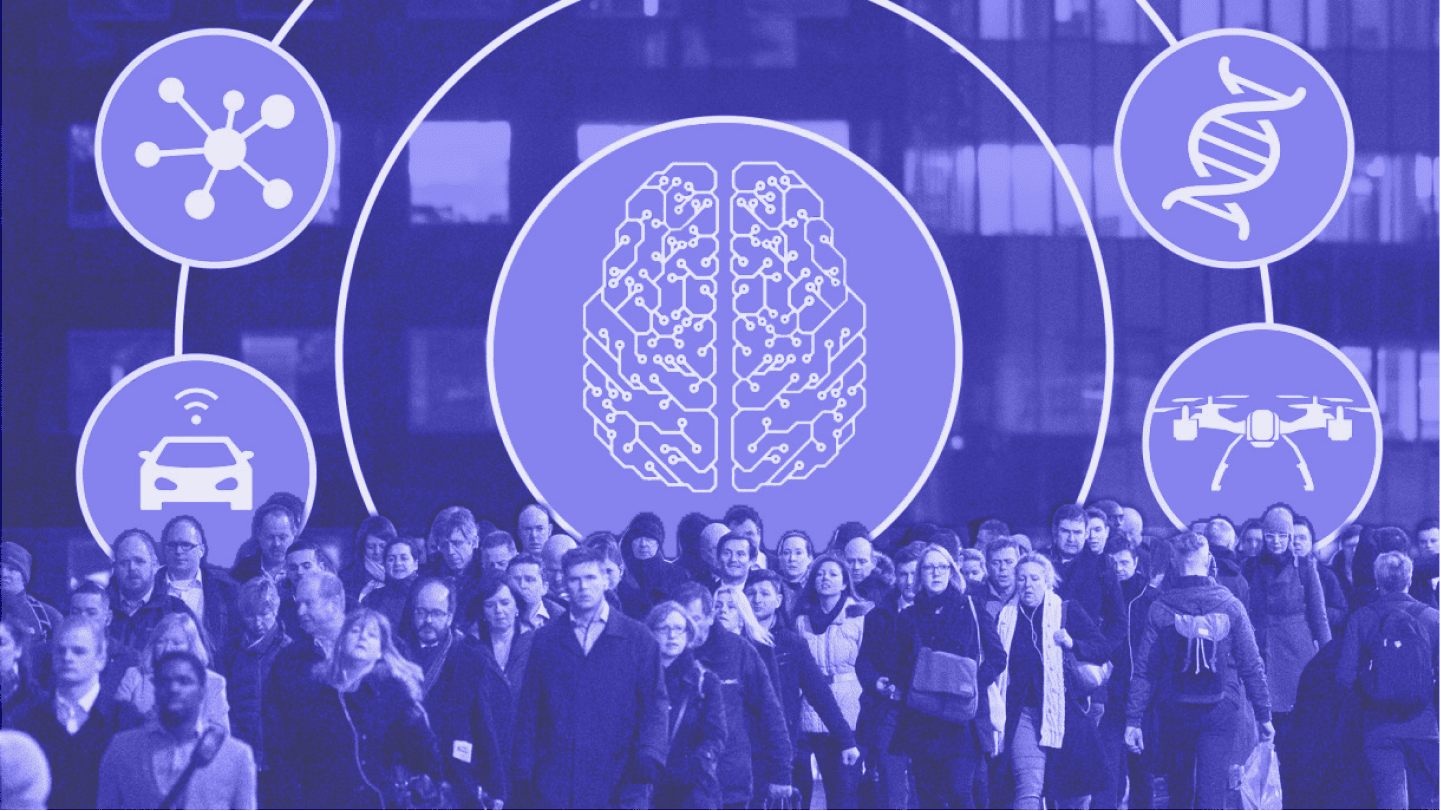Mobile applications continue to redefine our working habits and routines while transforming our daily activities. People naturally grab their phones without hesitation for health tracking, grocery shopping, and route navigation. Today, our lives depend a lot on mobile technology, and it is constantly gaining traction.
The numbers reflect this shift. The mobile app market worldwide shows rapid growth trends, forecasting a scale from $195.7 billion in 2023 to $606.1 billion by 2032. The future market will expand beyond existing figures by more than 300 percent. By 2025, the number of downloads will surpass 300 billion, while current figures stand at 121 billion. The substantial market expansion proves we increasingly depend on applications throughout our existence, including business operations and leisure activities.
But what’s coming next? AI serves as a central operational force that enables applications to predict user needs while performing automatic tasks that enhance daily life convenience for people. The developing mobile app industry is starting a new era that will profoundly impact the market. In other words, 2025 will bring many new trends in all areas, including creating mobile applications. So, let's talk about mobile app development trends this year.
(IoT) app integration
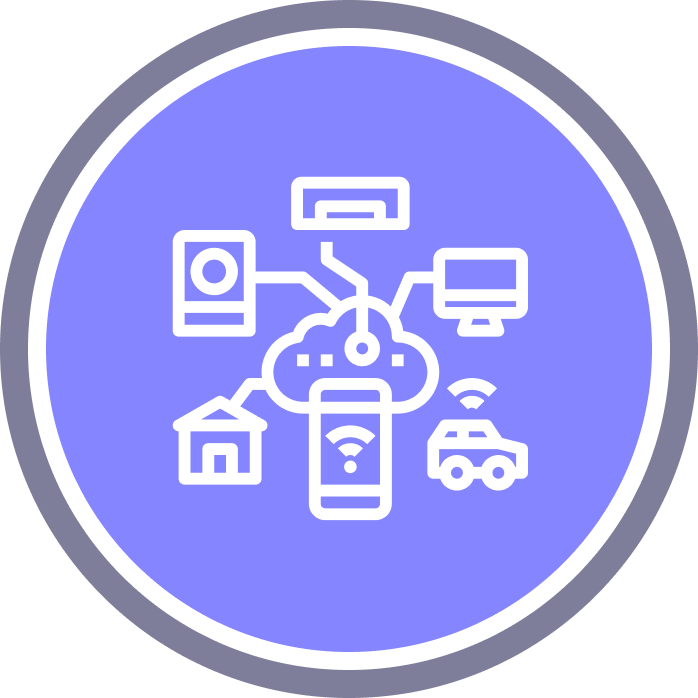
We are on the threshold of the fourth industrial revolution, and many industries are on the way to full automation. The Internet of Things (IoT) will remain a popular mobile app development trend for a long time. This technological concept of connecting things to the Internet for remote control through software allows you to perform various tasks more efficiently. Management can be carried out in different ways, but the most popular today is mobile application control.
IoT takes mobile app development to a whole new level. Companies around the world think they can control a smartphone. Consumers are no longer surprised by remotely controlled household appliances and computer voice assistants, so the range of technology that can be connected to the Internet of Things is growing every day.
Integrating the Internet of Things and applications is a powerful combination that provides limitless and excellent opportunities for use in many industries. Businesses, governments, and consumers are realizing the benefits of connecting inert devices to the Internet, which means that a world of interesting technologies and applications is not far off, which will become indispensable assistants to it.
Examples of using IoT app integration:
Automotive applications
The automotive industry is one of the most innovative industries, but the concept of cars and the Internet of Things is still quite distant. However, the potential of using IoT devices for transport is vast. Innovative solutions allow you to receive recommendations for car care and remotely control automatic systems: set up an alarm, optimize fuel consumption, and set car speed limits.
Manufacturers can use the Internet of Things to identify serial defects quickly, obtain data about driver behavior and vehicle performance, and more.
We Connect by Volkswagen is a great example of an IoT mobile app, available for both Android and iOS users. This application allows remote access to the car settings anywhere and anytime, as long as you are connected to the Internet.
Industrial production management
The approaching industrial revolution, Industry 4.0, will lead to maximum automation of production processes, economic growth, improved productivity, and the competitiveness of enterprise mobile apps. Today, many companies use IoT sensors to track the activities of people and assets in the workplace to improve management and work in general.
The mobile application can display the movement of connected equipment and people inside production facilities. This solution can be beneficial for optimizing plant managers' workflows.
Retail purchases
Mobile commerce is another industry where the tandem of the Internet of Things and mobile applications is of great importance. The Amazon Go store is a prime example of how technology can make life more comfortable. The retail giant has used IoT sensors, cameras, and other in-store equipment to cut checkout queues. The customer enters the store, scans the barcode of the unique Amazon Go application, takes all the necessary products, and leaves, and the application sends him a payment receipt. Based on the Internet of Things, AI, and ML technologies, this concept significantly improves the traditional shopping experience in convenience stores.
Apps for foldable devices
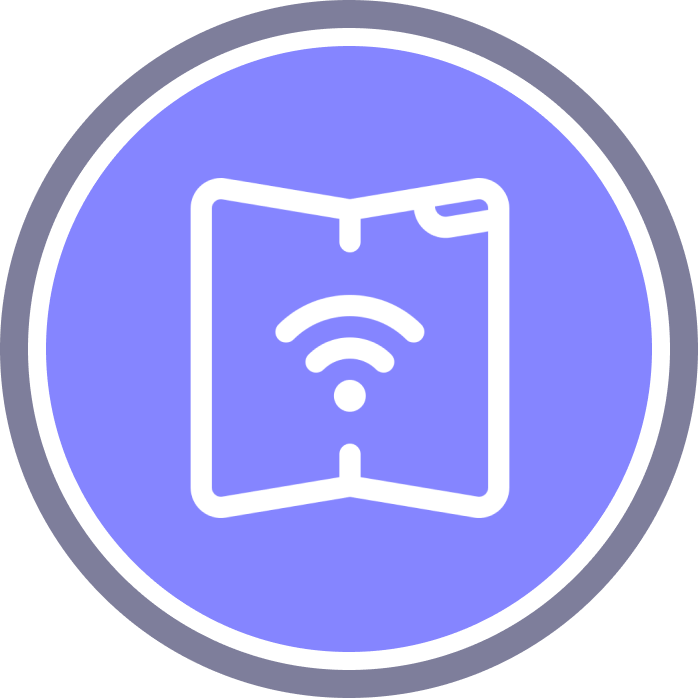
Another interesting technology from the "mobile app development trends" list is an app for foldable devices. In this technological era, are you also one of those who want to keep up with the current application development trends? Then you are indeed doing the right thing! With the launch of foldable smartphones, every mobile app development company is working on making foldable smartphone apps.
You may know that foldable smartphones are slowly gaining popularity with many features and models. Some phones can be folded vertically and others horizontally, yet all foldable phones have one thing in common: they transform from larger to smaller devices.
Developing a mobile application for foldable smartphones is not as difficult as it seems initially. With a professional and talented mobile app development company, you can create rich, flawless apps that run smoothly on foldable devices. You just need to focus on the testing part of the app before launching it on the market. The foldable smartphone is a great concept and will evolve in the market.
Development for wearable devices
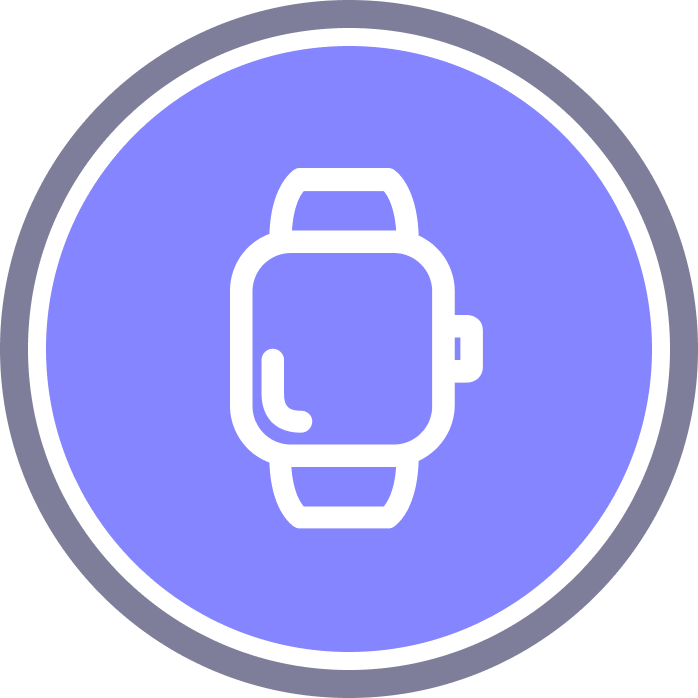
Today, wearable devices are still at an early stage of development. This means that when talking about designing for such gadgets, we can focus on a specific niche. This will clearly explain how meticulous planning for future user experiences can quickly teach app users to operate the device and explore other innovative products.
A typical wearable user is a person in their 20s and 30s with an upper-middle income.
Typically, these people do not have ingrained prejudices, allowing them to quickly deal with new products and gadgets and adapt to new ways of interacting. In addition, we assume that before that, they already owned one or more smartphones. These are tech-savvy people who spend significant time using the Internet. Many visit websites related to gadgets, such as Apple and Android, and possibly related to startups, development, and design. All of the above means that a few limitations keep us from expanding the user experience and developing interaction methods. However, very often, the screen size, technology features, and design concept are decisive in creating the user experience.
We can clearly distinguish two categories of products on the market: glasses (smart glasses) and smartwatches.
Smart glasses can use navigation to track your location and provide you with information about the best route. They can also record videos, take photos, and search by voice.
Smartwatches have functions related to health care, an active lifestyle, and receiving payments and calls. They also allow you to interact with other devices and listen to music.
In the current stage of the development of wearable devices, watches have some advantages over glasses, as there are many more applications for watches, and they are cheaper. It is worth paying attention to the fact that the watch is a less intrusive manifestation of wearable technology. However, we should not forget that glasses give us great opportunities in user interface design, making them more attractive for complex ideas that will be the basis for a new generation of wearable devices.
Artificial Intelligence (AI)

By 2025, the total volume of the AI technology market will increase to $294.71 billion. The annual growth rate (CAGR) will be maintained at 31% over the forecast period. The widespread introduction of AI technologies by 2030 will increase the global market volume for goods and services by $15.7 trillion. Analysts of the international consulting company Frost & Sullivan provide such data.
AI remains one of the leading areas for research in computer technology. Such attention is paid to this area because AI, imitating the human thought process, can self-learn and perform various actions much more efficiently than conventional computers programmed to perform the same tasks.
In healthcare, AI is mainly used to identify patterns in medical data and can significantly improve treatment accuracy. It minimizes the possibility of false diagnoses and, as a result, reduces treatment costs. So, the Californian startup HealthTap has developed an application that analyzes the records of more than 100,000 doctors to identify the most accurate diagnosis.
AI also transforms cybersecurity by enabling innovation to protect against threats that traditional network security tools cannot detect. The specialists of Deep Instinct (Israel) have developed deep learning algorithms (one area of AI) that can detect anomalies in the network's behavior and the presence of targeted cyberattacks (APT) that cannot be detected using traditional technologies.
App security
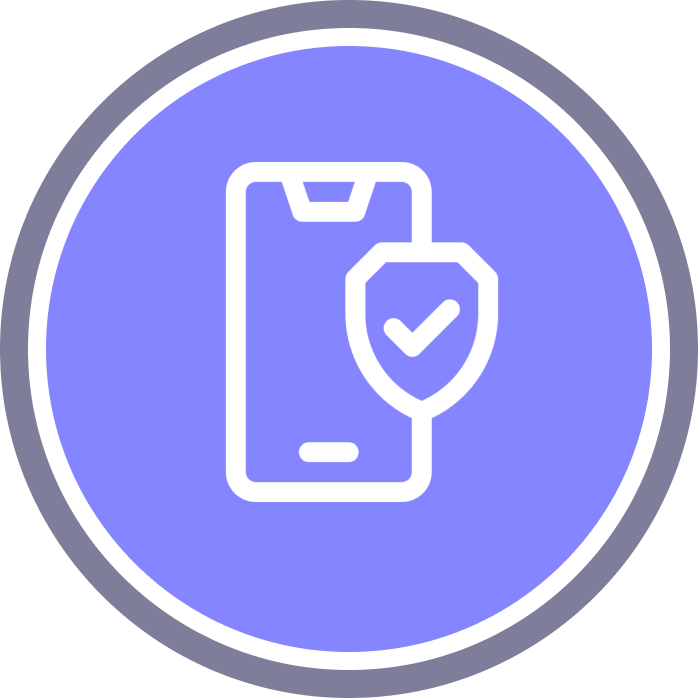
The Covid-19 pandemic has forced us to stay at home due to social distancing measures, and these behavioral changes have increased using on-demand apps.
Such widespread use comes with security risks, although not all users understand the importance: such a lack of knowledge can be exploited by attackers.
Mobile apps without security protocols pose a danger to users and mobile app developers because unprotected vulnerabilities can become a target for hackers who can attack with malware or break data.
It is essential to ensure that the application is as secure as possible at this particular stage. Of course, you have automated tools ready to help you identify problems in your source code. The main problem arising at this time will be finding and fixing bugs and tracking down other security vulnerabilities. While these tools are effective for solving common security problems, they may sometimes fail to detect more complex problems.
Here you can get an expert opinion. You can ask another developer to review your code and provide feedback on your application. Approaching a third party helps as they can find and fix some of the flaws you left behind during any of the above steps.
Predictive analytics
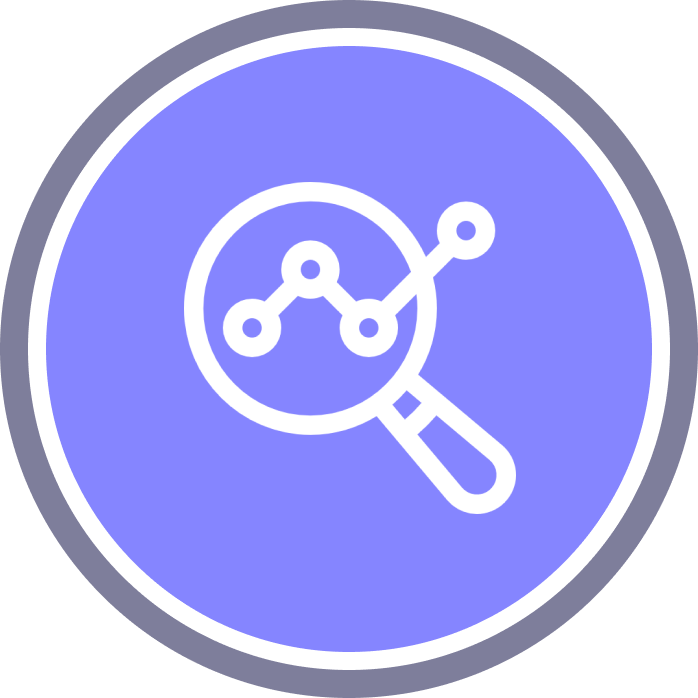
You encounter predictive analytics every day. Years of weather observations and computer simulations allow meteorologists to warn you to take your umbrella tomorrow.
Accurate forecasts of future events provide a significant advantage in many industries, such as stock trading or organizing logistics and supply chains. More recently, prognostication has been used in industry to prevent equipment failures. For this, methods of empirical modeling, statistical and parametric analysis, machine learning, neural networks, and many other technologies are used. But for this, you need to collect, accumulate, and process data.
Digitalization of equipment — connection of digital sensors, interfaces, and data collection systems — allows the use of automated process control systems (APCS). They monitor the equipment's performance, warn of critical deviations, and protect installations from operating beyond their limits. But, despite their complexity, they work only in ''real-time'' mode, signaling danger or turning off equipment ''after the fact.''
Voice search

Voice technology is a key item that is gaining momentum, not only for integrated Internet marketing (PPC + UX + SEO). Over time, consumer behavior changes, which means that the ways of communicating with them should gradually change. Businesses gain market advantage by implementing voice search features because they align with future customer needs and preferences.
More and more consumers are using voice to perform search queries, search for local locations, online stores, and products, and make purchasing decisions.
Based on the data, here are the top reasons why businesses should use voice search in 2025:
Approximately 20.5% of online users worldwide use the mobile voice search capability.
The prediction suggests that by 2025, more than three-quarters of all U.S. households will have one or more smart speakers installed in their homes.
Users prefer natural language interaction through conversational voice searches, which comprise about 80% of total voice search queries.
Voice searches focus heavily on local discoveries because customers direct about 76% of their inquiries at discovering nearby businesses' locations.
This broad adoption calls for businesses to embrace voice search capabilities to fulfill consumers’ desires and improve user experience.
Blockchain technology
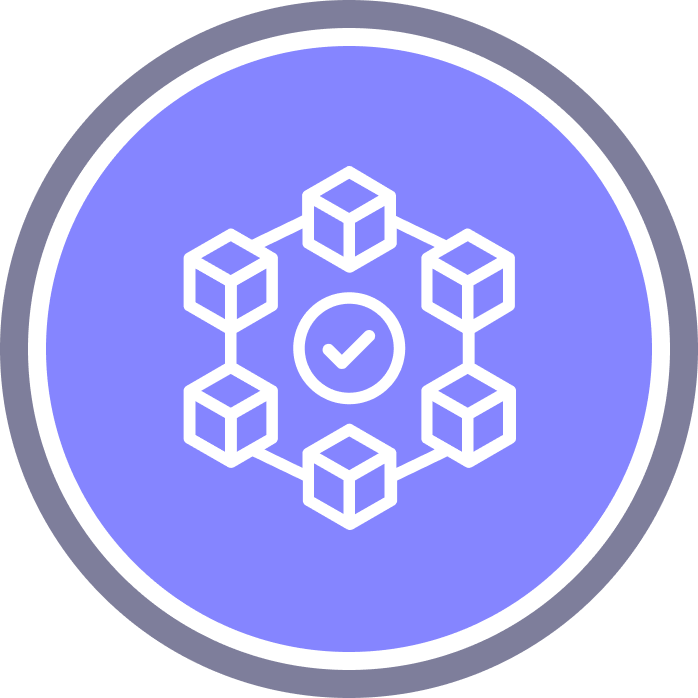
As the demand for cryptocurrency continues to surge, the popularity of blockchain technology is growing daily. In today's realities, people are trying to optimize and use this technology to store and process information in the fields of computer gaming apps or marketing.
The literal translation sounds like a "chain of blocks." The main difference from standard databases is that it is impossible to change information or altogether remove it from the database; users can only add it. Blockchain technology works on the principle of a distributed registry: even if one link falls out of the general chain of transactions, its data is stored on mobile devices and computers of other independent users. Thus, the system is not afraid of failure since the information does not disappear anywhere and, if necessary, it can be retrieved. That's why it is the main technology for creating smart contracts.
The volume of investments in this area is growing every year, and by 2025, investments are expected to grow by more than $900 million, which indicates the project's profitability and prospects.
Examples of using Blockchain technology:
Logistics
Blockchain can be used as an electronic waybill. In this case, you can track the entire route of delivery of goods from the supplier to the buyer. This solution can replace the traditional CRM system with the international invoice management system. Moreover, new technology has an advantage over old one. The CRM system is subject to data hacking, alteration, or deletion. Once placed on the public blockchain, the information remains and cannot be deleted.
Counterfeiting
Blockchain technology can be highly effective at detecting counterfeit products. Luxury goods manufacturers, such as fashion designers, often suffer from a similar problem. The consumer is also not always sure of the authenticity of the product. Blockchain-based product authentication protects both the brand and the consumer. This solution has been used by LVMH (French Louis Vuitton), Microsoft, and Consensys to create the Aurora platform to help the luxury industry track and trace products.
Utility tokens
Blockchain can also be used by online platforms using utility tokens. The payment tokens can then be used as loyalty points, i.e., tokens stored on the blockchain are used instead of traditional loyalty points. Thus, the fear of losing a loyalty card disappears. Instead of using e-commerce solutions, an online store can implement blockchain technology and use tokens to tokenize their business. In the same way, blockchain can be used as a payment system on an internet platform. Instead of paying in traditional currency, payment is made in tokens.
5G technology

5G is one of the most talked-about technologies of the decade's end. The world will see a 5G network expansion to one-third of the global population while North America stands out for expected 90% adoption by 2030.
On the one hand, 5G networks are expanding worldwide, and mobile developers benefit from faster speeds. On the other hand, the reduced latency of this network technology is undoubtedly the most significant game-changer for applications.
Examples of using 5G technology:
This includes the concept of a smart home, manufacturing and computing power (IIoT), and smart city infrastructure. Devices and systems are combined into a shared network with remote control and monitoring with minimal delays. In the first case, it can be household appliances, climate control, and emergency warning systems. At industrial facilities, 5G will provide fast, high-quality communication between machines, measuring instruments, and data centers. Residents of cities will be able to take advantage of uninterrupted online access to various services: public service centers, public transport, and more.
Autonomous vehicles
Autonomous vehicles, including trucks, city taxis, and agricultural machinery, can revolutionize various modes of transport by operating autonomously to ensure greater accuracy, reliability, and safety in processes.
Cloud technologies
Data storage, instant loading, and computing are evolving with cloud services. Applications that previously required on-premise installations will become widely applicable. Thanks to high-speed data transfer, users and mobile app developers can perform operations requiring high hardware power with only mobile Internet.
Healthcare
High-quality communication with remote regions will provide high-quality support in an emergency. The 5G video stream will give high speed and resolution during complex operations or diagnostics. Also, with the help of fitness trackers, users can transfer their biometric parameters continuously for storage and processing.
Virtual Reality and Augmented Reality (VR/AR)
Augmented and virtual realities are not just about entertainment but also completely responsible applications — VR technology can be used in interactive learning systems, navigation systems, complex development processes, and even tactile Internet.
Biometric authentication
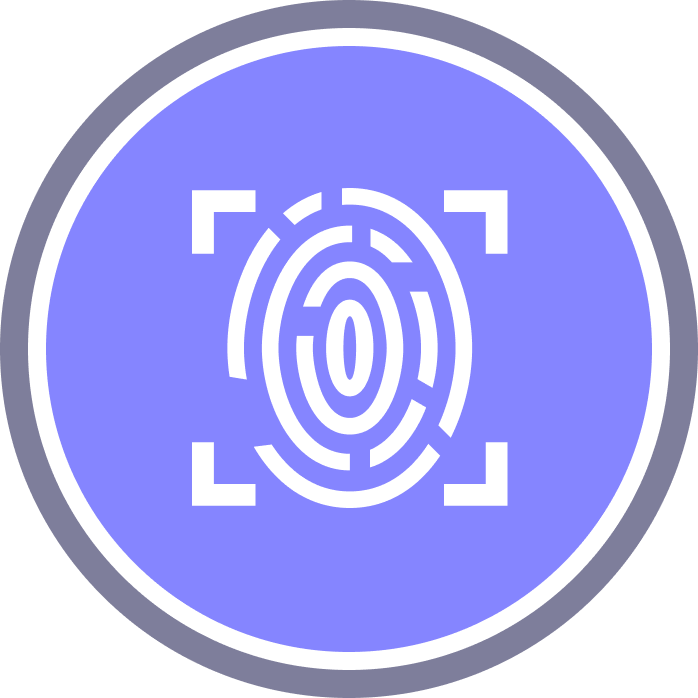
Biometrics refers to the measurable physical or behavioral characteristics that can be used for identity verification. Biometric authentication leverages these unique traits to create secure, data-driven models for accurately recognizing individuals. With this model and biometric information, security systems can authenticate access to applications and other network resources. Biometric authentication is rapidly becoming a popular component of multi-factor authentication strategies because it combines a strong authentication challenge with a user-friendly user interface.
Biometric authentication is used in a wide variety of applications across many industries. Here are just a few examples of how these industries use biometrics to improve the security and efficiency of existing processes.
Travel and hospitality
Some airlines and airports let passengers check-in for flights using facial recognition. Similarly, hotels and hospitality companies are allowing self-check-in through biometric authentication. For example, face recognition technology in check-ins exists across airlines such as Dubai International Airport.
Banking and financial services
Security and authentication are essential in many industries, especially mobile banking. Financial institutions use biometric authentication as part of a two-factor or multi-factor authentication strategy to protect a bank and its customers from account takeover attacks. Bank of America combines biometric authentication with other security measures to safeguard against account takeover and fraud attempts.
Healthcare
Biometric authentication, such as fingerprint scanners, iris scanners, and facial recognition, can help hospitals verify a patient's identity, ensure caregivers access the correct medical information, and more.
Conclusion
In the coming years, we will see more advanced technologies used in fully functional mobile apps to create a more exciting and secure customer experience. Businesses will continue to improve mobile apps, focusing on streamlining operations and improving customer service because more and more people will use smartphones to do everyday tasks.
Mobile app development is vital for any company that wants to stay competitive. Complying with the latest trends in mobile application development is an integral part of improving the quality of customer interactions.
If you are looking for a top mobile app development team — we are here to assist you! Contact us at any time to make your business thrive.








